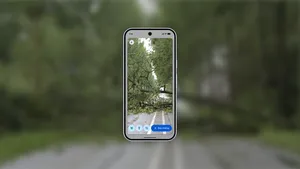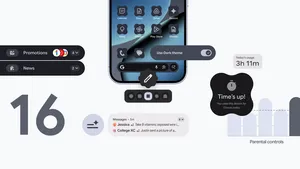Expanding Emergency Location Service in Android to the U.S.
Accurately locating someone during an emergency call is critical for reducing response time and can be the difference between life and death. More than 80 percent of emergency calls come from mobile phones, but locating these phones can be challenging as traditional emergency location technologies can fail indoors or have a radius that’s too big to be useful.
In 2016, we announced Emergency Location Service (ELS) in Android. ELS provides a faster, more accurate location to emergency communications centers when an Android user places an emergency call, helping save lives by shortening emergency response times. It provides a more accurate location both indoors and outdoors by using a combination of GPS, Wi-Fi, mobile networks and sensors—the same high-accuracy location you see when using Google Maps.
Over the last two years, we’ve been expanding ELS worldwide; it's now available in 14 countries and provides location to emergency centers for more than 140,000 calls per day. Today we’re announcing the launch of ELS in the U.S. with RapidSOS, T-Mobile and West, to bring more accurate location more quickly to emergency centers.

How Emergency Location Services in Android works
ELS is supported on 99 percent of Android devices (version 4.0 and above). The ELS service activates where it is supported by your wireless provider or emergency infrastructure provider. We partner with wireless providers and public safety organizations to activate ELS in a country. You don't need to install a separate app, update your OS, or have special hardware to benefit from more accurate location. The location is computed on the device and delivered directly to emergency providers—without passing through Google servers, and only when you explicitly call an emergency number.
Bringing more accurate emergency location to the U.S.
In partnership with emergency technology company RapidSOS, we provide ELS location directly to emergency communications centers through their secure, IP-based data platform. RapidSOS integrates with existing software at emergency centers in the U.S. to provide a faster, more accurate location with ELS. In testing the technology in the U.S., emergency centers have told us ELS has already helped save lives in their jurisdiction, decreasing the average uncertainty radius from 159 meters to 37 meters (from 522 feet to 121 feet). At the Collier County Sheriff's office in Florida, a caller who had given an incorrect address was able to be found thanks to ELS. And in Loudon County, TN, ELS helped emergency responders get to a non-English speaking caller who was struggling to communicate her address.
ELS is also available for Android users on T-Mobile in the U.S. If you’re on T-Mobile’s network and make a call to 911, your Android phone can send your location to the emergency center to help first responders locate you quickly. Wireless providers like T-Mobile have existing ways to share emergency locations with emergency centers, but this integration with ELS will help deliver higher accuracy locations faster than before.
Finally, we’ve already launched ELS in the U.S. Virgin Islands through a partnership with West and a regional wireless provider, Viya. West is an emergency technology company that works directly with wireless providers. For Android users on Viya, our integration with West allows your more accurate location to be delivered more quickly with ELS to emergency centers through existing channels by wireless providers.
Helping users around the world
As we've launched ELS around the world, we've heard about the impact that our more accurate location has made in critical, emergency situations. In Austria, a mountain biker in a remote, heavily forested area suffered a serious accident and called emergency services for help. The legacy emergency location systems provided a location with a radius of more than 900 meters (about half a mile), while ELS was able to provide a location within 12 meters (39 feet) to help first responders locate the biker.
In New Zealand, Fire and Emergency received a call from someone who had seen a fire while he was driving along a rural highway. The caller didn’t know where he was on the highway. Using ELS, Fire and Emergency New Zealand was able to locate the caller and the fire, and dispatch a crew to put the fire out.
As we continue to expand ELS in Android in the U.S. and to additional regions and countries, we’re grateful for the opportunity to provide assistance when our users need it most. To learn more, check out our website at https://crisisresponse.google/els.






